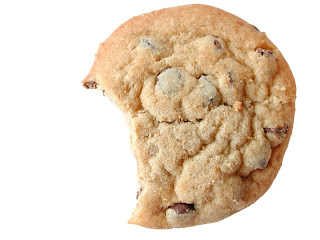 |
You have probably heard of trans fats and know that they are bad for you, but maybe you’re not sure why, and you don’t know where they come from. You may think you’re eating a diet free of trans fat, but if you’re like most Americans, you definitely are not. Trans fats do occur in small amounts in nature, but most are artificially created fats which have an added hydrogen to the fatty acid chain (in a process that makes them “hydrogenated”). Manufacturers do this because hydrogenation allows foods to have a longer shelf life, have a better taste and texture, and the oils can be used several times in deep fat frying, which saves restaurants money.
Trans fats are bad for you because they have shown to increase bad cholesterol (LDLs) and lower good cholesterol (HDLs). In fact, artificial trans fats were “banned” from restaurant chains in NYC a few years back, making these restaurants reformulate their recipes to contain <0.5 g trans fat/ serving. On food labels, a food can be considered “trans fat free” if it contains <0.5 g trans fat/serving. That being said, a food can have 0.45 g and be considered trans fat free. Eat 2 servings of that product, and you will be consuming close to 1 gram of trans fat. The American Heart Association recommends consuming less than 1% of calories from trans fat, so on an 1800 calorie diet, that would be less than 2 grams. Furthermore, if a food is trans fat free, that doesn’t mean it is fat free nor healthy- the food still may contain loads of fat and saturated fat.
Trans fats are still omnipresent in the typical American diet, and surprisingly, manufacturers are still using them in foods. Some examples I have come across are Special K Chocolately Delight [in the 4th ingredient! Serving size= ¾ c], Coffeemate powdered and liquid coffee creamers [2nd & 3rd ingredients respectively- serving size 4 tsp dry, 1 tbsp liquid], JIF and Skippy regular and reduced fat peanut butters [3rd ingredient, serving size= 2 tbsp], and a ton of other foods you may be consuming.
My
Recommendation: ALWAYS look for the
words “hydrogenated ____ oil” on a food’s ingredient label and avoid eating
that product if it contains a hydrogenated oil. Even foods like bakery Irish
soda breads, which are low in fat, oftentimes contain these oils to help keep
them from staling and to give them the texture people crave. There is no need
to consume trans fat, and there is no positive research on it. So best to avoid
it, and always read the ingredient label… that is always more telling than the
basic nutrition information.

